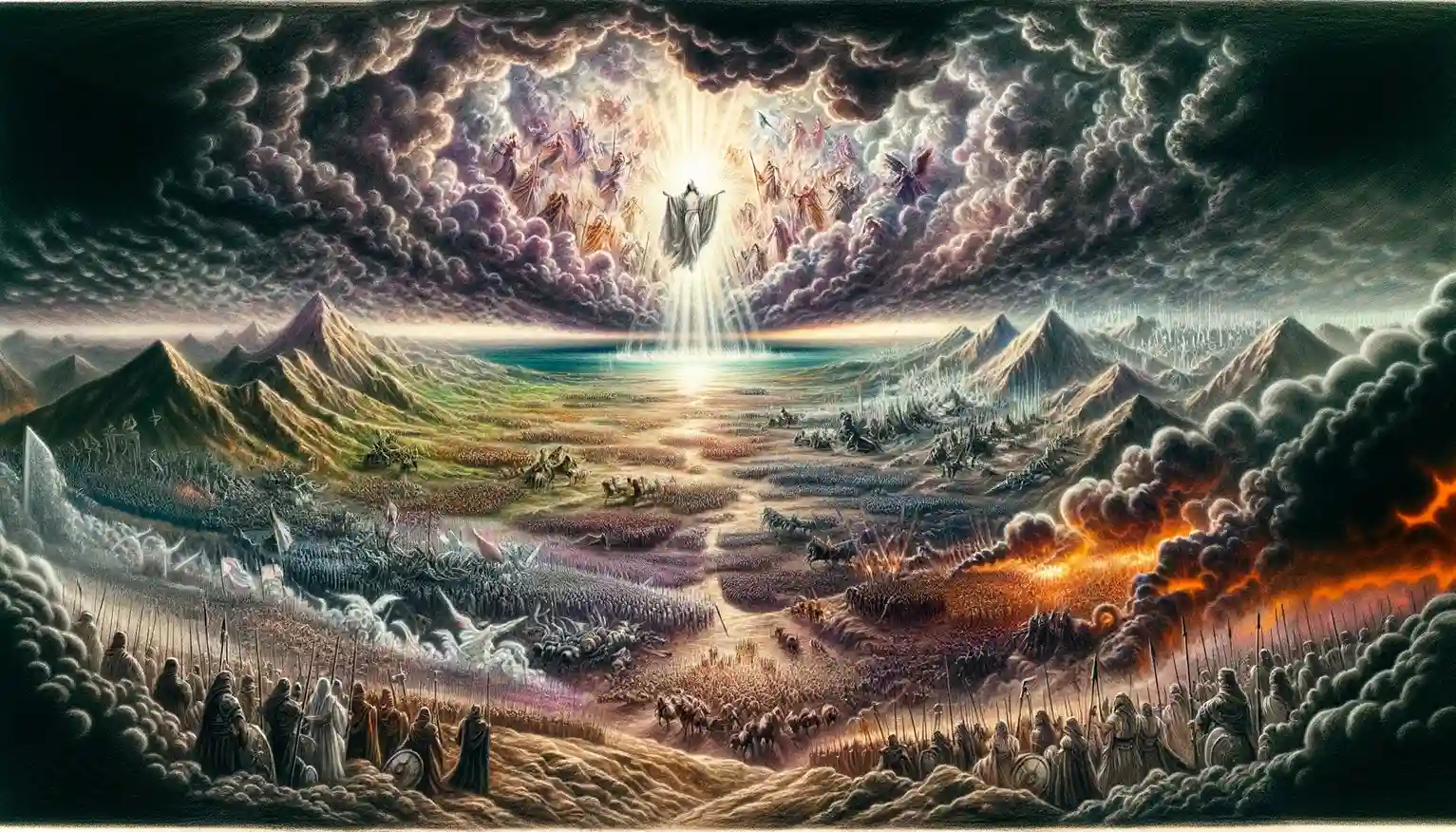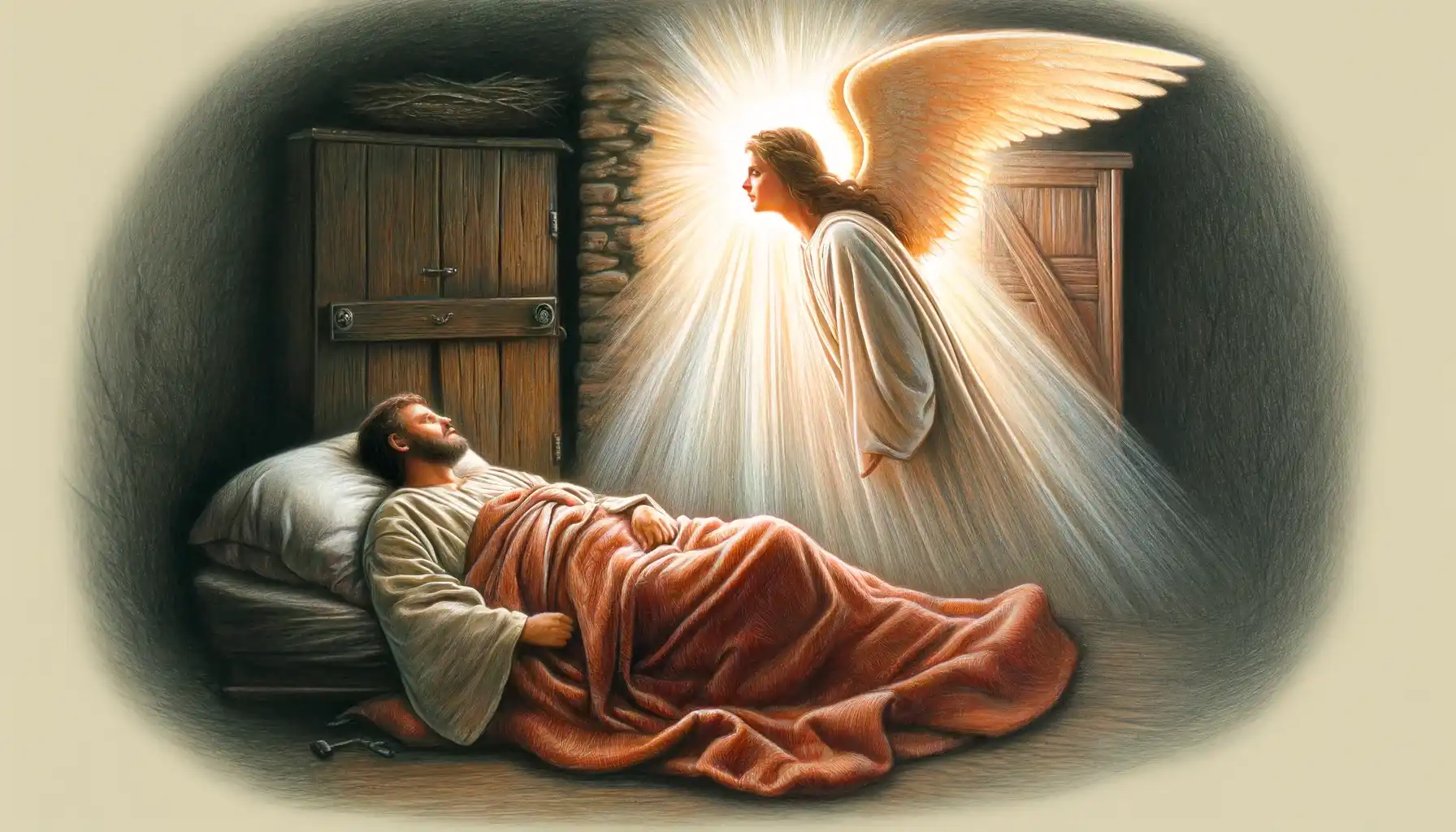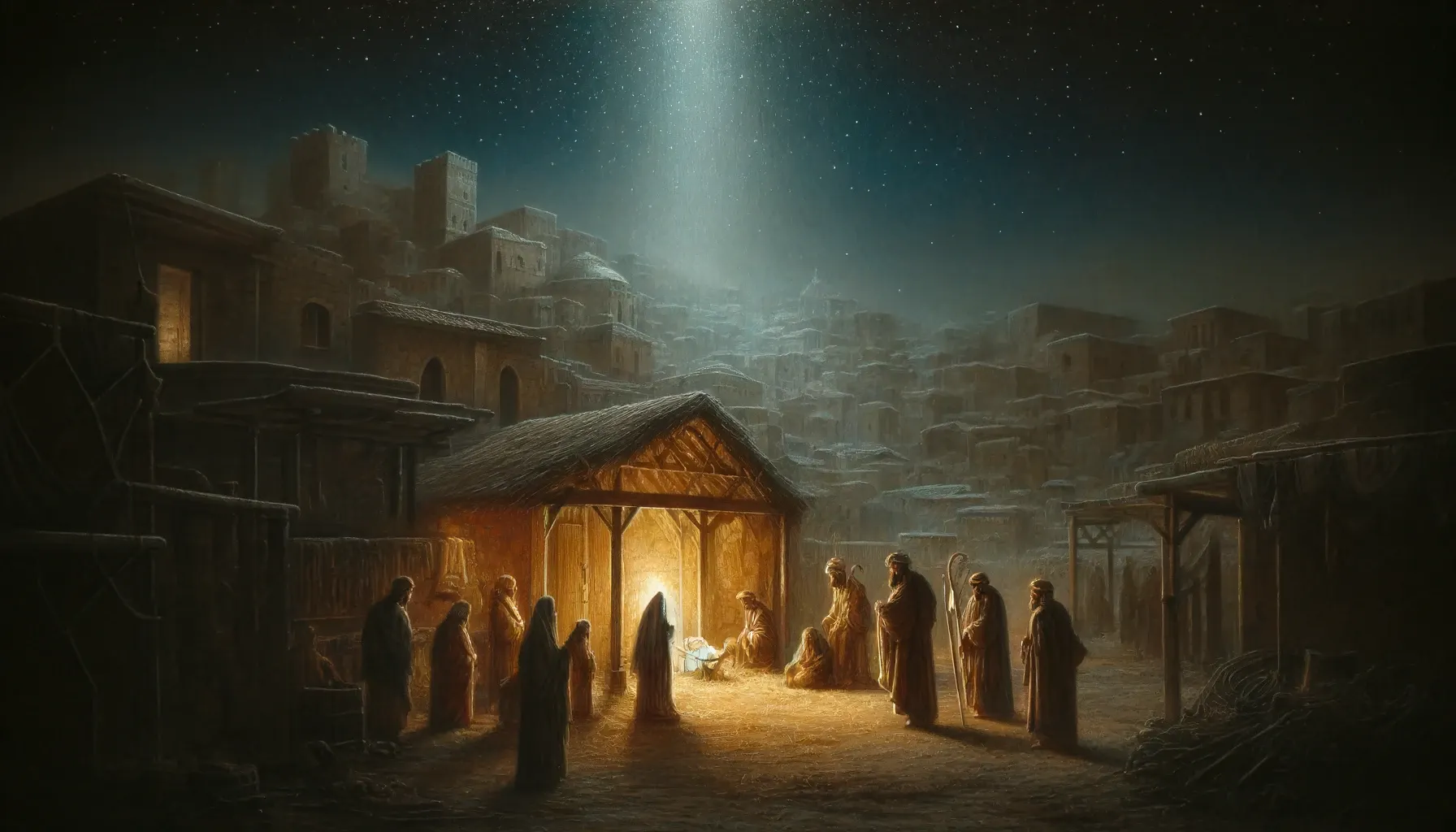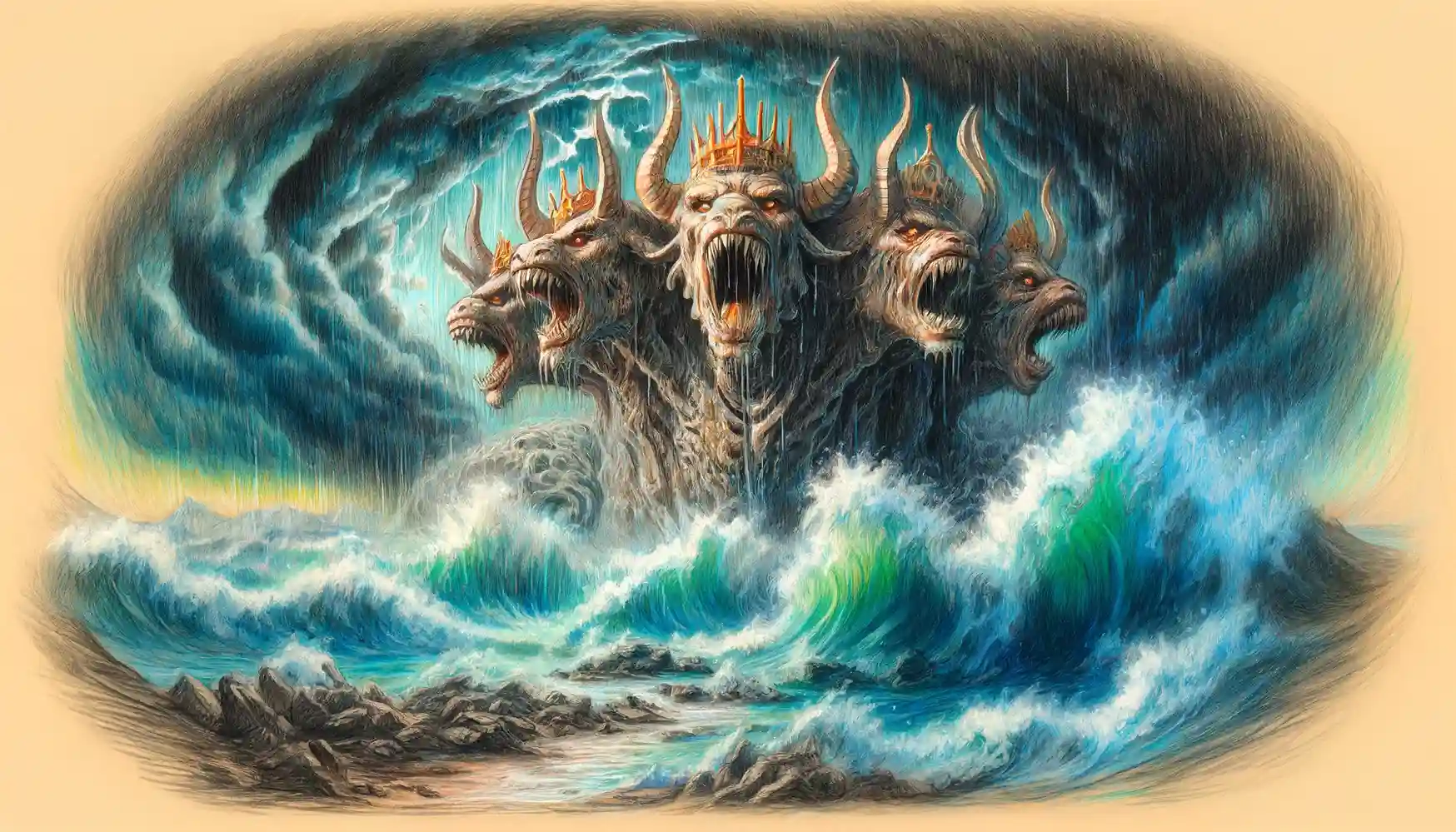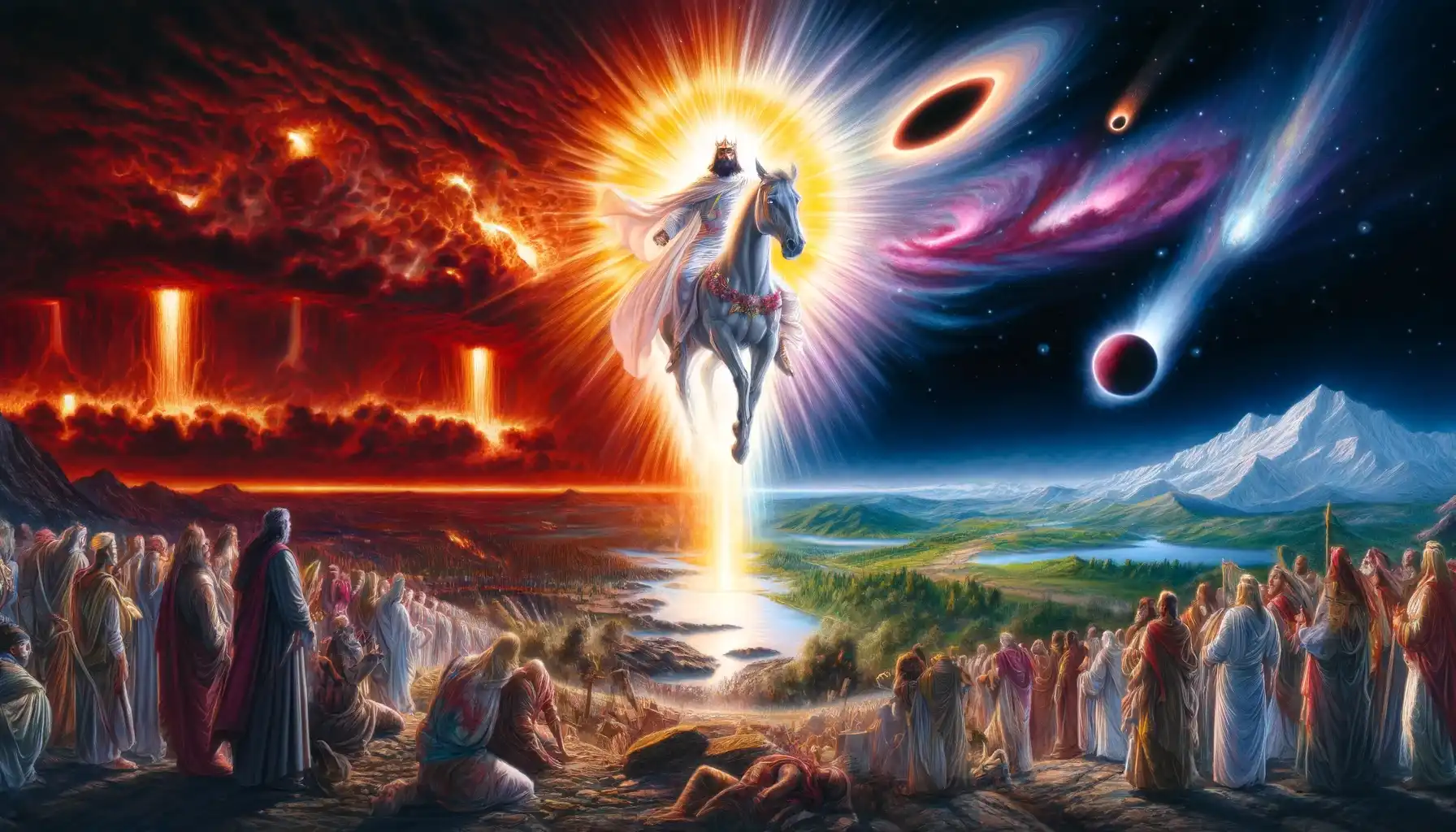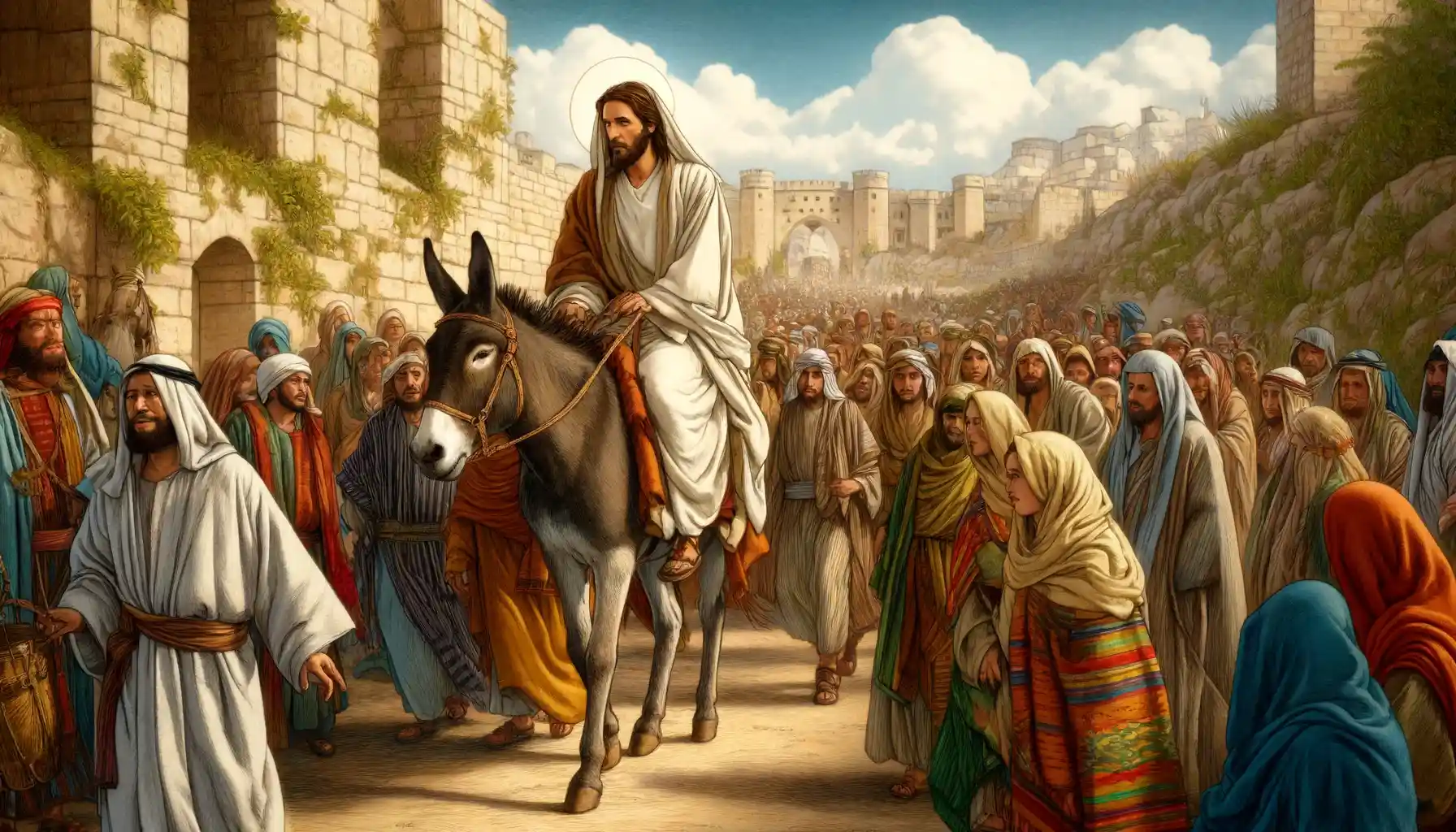The Battle of Armageddon in Revelation 16:16 is a focal point in eschatological prophecy, symbolizing the climactic end of history where divine justice prevails over the forces of evil.
2 Chronicles 7:14 holds a timeless message of hope and restoration, offering an ongoing promise of divine forgiveness and healing for those who sincerely turn back to God in repentance and humility.
The prophecy of a virgin birth in Isaiah 7:14, fulfilled in Matthew 1:18-23, profoundly articulates the theological and historical dimensions of Jesus’ miraculous conception, emphasizing His divine nature and the fulfillment of Old Testament prophecy, which is central to Christian doctrine and worship.
The prophecy of the Messiah’s birth in Bethlehem, as foretold in Micah 5:2 and fulfilled in Matthew 2:1 and Luke 2:4-6, showcases the meticulous orchestration of divine plans across centuries, affirming the messianic identity of Jesus and the seamless continuity between the Old and New Testaments.
The Antichrist, as prophesied in Daniel 7:23-25, 2 Thessalonians 2:3-4, and Revelation 13, is depicted as a blasphemous global leader who rises to unparalleled power, opposes divine authority, and persecutes the faithful, heralding a period of profound tribulation and deception before the ultimate victory of God’s kingdom.
The Second Coming of Christ, depicted in Matthew 24:27-31 and Revelation 19:11-16, portrays a momentous event marked by universal visibility, cosmic disturbances, and divine triumph, symbolizing the final judgment and the eternal establishment of God’s kingdom, fulfilling His promises of redemption and justice.
The biblical event of Jesus’ entry into Jerusalem on a donkey, as described in both the Old and New Testaments, serves as a significant fulfillment of prophetic scripture and a pivotal moment in Christian theology. Here are the essential facts …

